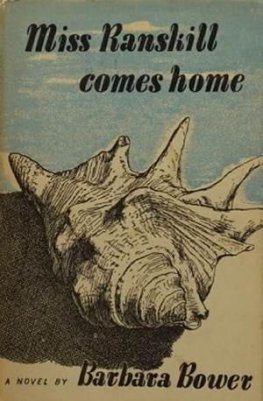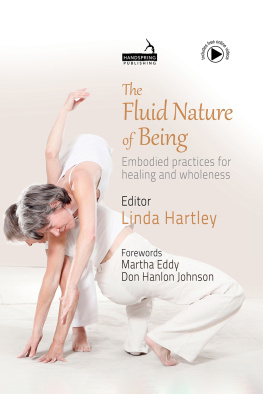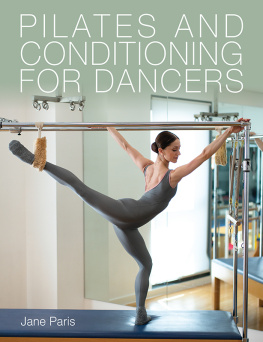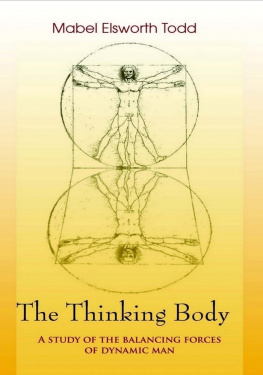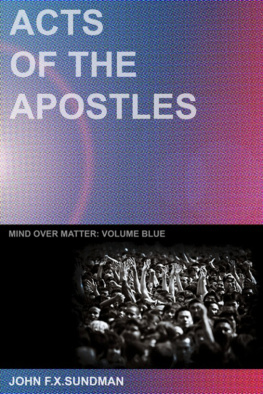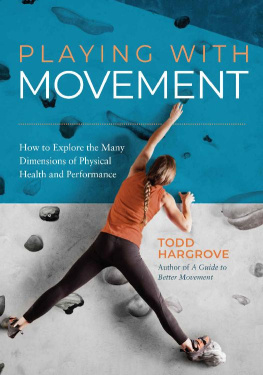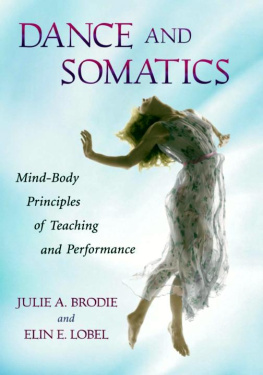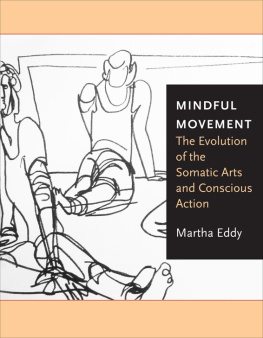Table of Contents
The Thinking Body
A Study of the Balancing
Forces of Dynamic Man
By Mable Ellsworth Todd
Foreword by
E. G. Bracket, M.D.
This is an unabridged republication of the original edition
first published in 1937 by Paul B. Hoeber, Inc.
Copyright 1937 by Paul B. Hoeber, Inc..
Copyright 2008 by The Gestalt Journal Press
Published by:
The Gestalt Journal Press, Inc.
P.O. Box 278 Gouldsboro, ME 04607
ISBN 978-0-939266-54-8
God guard me from the thoughts men think
In the mind alone.
He that sings a lasting song
Thinks in a marrow bone.
William Butler Yeats:
The King of the Great Clock Tower.
PREFACE
A portion of this text was prepared originally as a syllabus for my students at Teachers College, Columbia University, published in 1929, under the title, The Balancing of Forces in the Human Being. Since then, the original syllabus has been expanded, particularly in those phases which indicate an approach to Structural Hygiene, as discussed in the text.
The ideas expressed in this book have been derived from more than thirty years experience in teaching bodily economy. They are based upon the concurrent study of physics, mechanics, anatomy and physiology. These theories, essentially empirical, became increasingly reinforced as the observations of such scientists as Sherrington, Cannon and Crile became available, with their emphasis upon the principles of the balance of forces in bodily economy and the determination of form by function, as a law of organic development.
Delay in setting down the material thus accumulated was deliberate; first, to avoid a formulation of ideas before these should have been validated, not alone by my own experience, but by that of others taught by me; and second, to prevent the premature appearance of a school or system, which so often spells the end of creative processes.
A sufficient number of teachers are now applying the ideas daily, in direct instruction of pupils in private studios or incidental to college courses in physical education and hygiene, to demonstrate the fact that these principles work. This is shown by results, both in energy saving in daily living and in their application to special skills.
In the 1929 syllabus, emphasis was laid on the psycho-physical mechanisms involved in the organic reaction to the problem of resisting gravity in the upright position.
Mechanical balance is provided for in the organism, else it could not have survived its primary encounter with gravity, momentum and inertia, as they were met upon emergence from the water.
The mechanisms for breathing, locomotion and mechanical balance are deeply tied in all bodily tissues and structural adaptations for these functions are closely interrelated. Such a fundamental consideration as chemical balance is not dwelt upon, although it is obvious that the very quality of the bodily substances which makes them capable of support and motion is conditioned finally by their chemical and physical properties. Details of the nervous involvements are presented but briefly, except to describe the proprioceptive mechanism as a prime factor in establishing coordinated movements.
Relaxation is the crying need of our age, but what it is and how to attain it are still unanswered questions. One must learn to recognize it and to deal with it in the stride of life and this book explains ways of thinking about it which will introduce new methods in dealing with it. This text presents the fact that bodily balance in accord with the principles of mechanics is a poignant means for conservation of nervous energy.
M ABEL ELSWORTH TODD .
New York, N. Y.
August, 1937.
ACKNOWLEDGMENTS
IN DEDICATING this book to the memory of Colonel George Fabyan, I record my lasting sense of obligation to him for his help during a friendship of many years. The tangible quality of his aid is indicated by the fact that he established a room in his laboratory equipped especially for the use of myself and my assistant teachers, in the study of the facts of physics, physiology and anatomy, as applied to our problems of bodily balance; and by his generosity in furnishing professional instruction and laboratory materials for our use; and by his interest in providing appliances to be used in correction and reeducation of physical maladjustments, including electrical appliances for experimentation in muscle action. All these and many other aids were extended to me because of the vision of a truly great humanitarian.
To my medical friends for their reading of the text and for their most helpful suggestions, I wish to express thanks: Dr. E. G. Brackett, Dr. Robert Osgood, Dr. David Riesman, Dr. Jesse Feiring Williams.
I am very appreciative of the generous consideration shown me by Dr. William K. Gregory, Curator of Comparative Anatomy of the Museum of Natural History, New York, for his helpful analysis and suggestions concerning those parts of the text pertaining to paleontological and morphological references, and for the use of illustrations.
To Dr. Marshall Fabyan, of Boston, I wish also to express gratitude for his generous and helpful expenditure of time and thought in the years of preparation of this work. And Dr. John Dane and Dr. Adolph Elwyn I wish also to thank for the many favors received from them.
To those who have aided in various ways in the compilation of this text, I wish to express my sincere appreciation: Dr. Louise S. Bryant for her invaluable help in arrangement and documentation of much of the material; Dr. Dimitri von Mohrenschildt for his help in reading the manuscript; Elizabeth and John Andrews and Kate Pierce Thayer for their kind and careful help in proof-reading and in arrangement of references. To the latter, Mrs. Thayer, who is the illustrator of this book, I owe the deepest gratitude for her patience in typing material and looking over manuscript, beside her own not inconsiderable task of making the many drawings found in the text. I wish also to thank the publisher, Mr. Paul B. Hoeber, and his assistant, Miss Florence Fuller, for their enthusiastic encouragement and continuous helpful suggestions during the preparation of this work for the press.
To all these friends I wish to record my warm appreciation and gratitude.
Mabel Elsworth Todd.
FOREWORD
The author of this book is particularly well fitted by many years of study and practical experience to present her subject. She has had, from the beginning of her career, definite theories of developmental exercise which she has put into practical use and has proved the soundness of her methods by success following their application. This book is not a treatise dealing purely with the subject of Physiotherapy, but presents a study of the fundamental facts underlying the principles of body dynamics as designated in the title which she has chosen.
Some of her opinions of the influences attributable to psychology bring into the picture forces which are not usually accepted, but, in these days, when the psychological processes are recognized to have an important influence on the functions of the body, we can accept all information on this phase of the subject with the open mind of an investigator. Psychological influences so strongly control the character of unconscious activity that they certainly should be used to guide the conscious and voluntary actions. The important part played by psychical activity in the development of the body is so evident that the results of constant muscle action through the unconscious and reflex control need no further proof.
There is a definite plan to that which is offered in this book. The basic principles on which the theories are built are discussed at length and these are used to illustrate the final action and control of the body activity and the influence of unconscious sensations on body control and body action is stressed.


